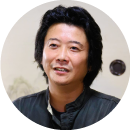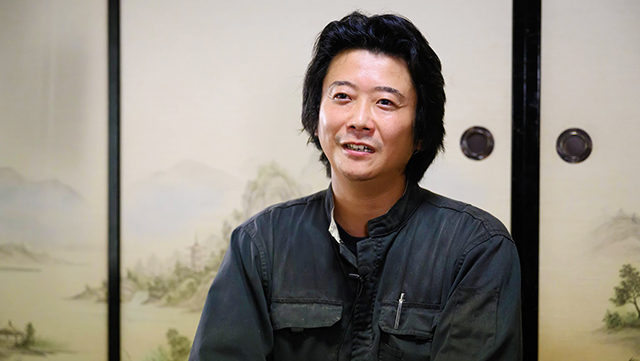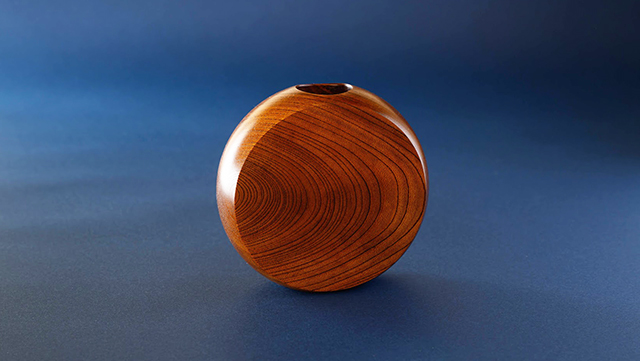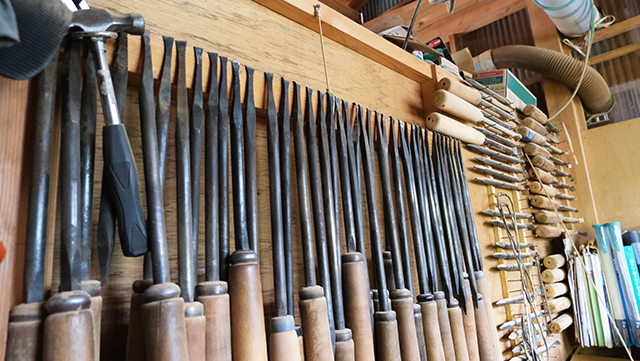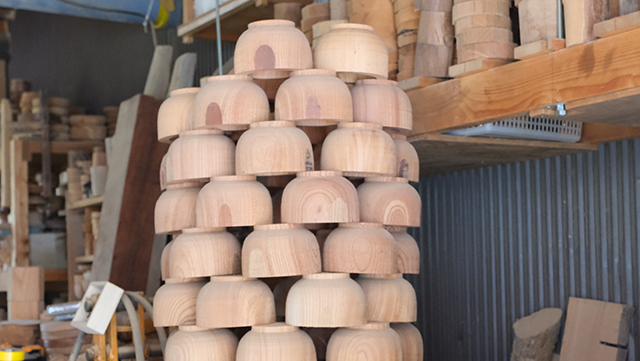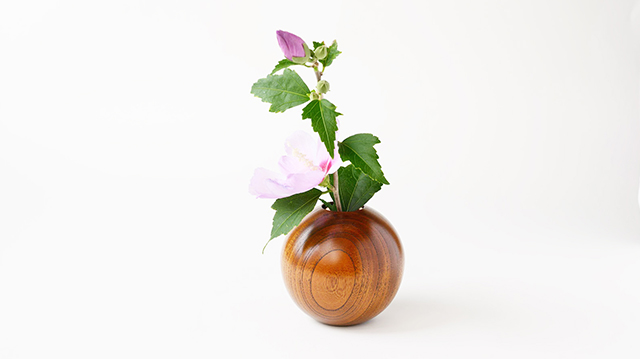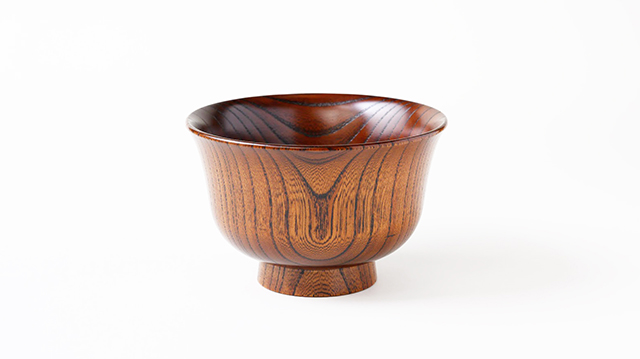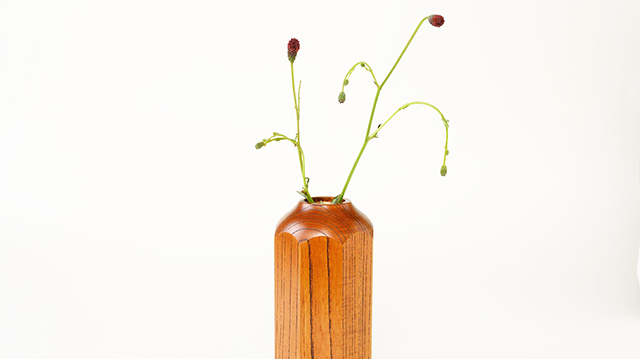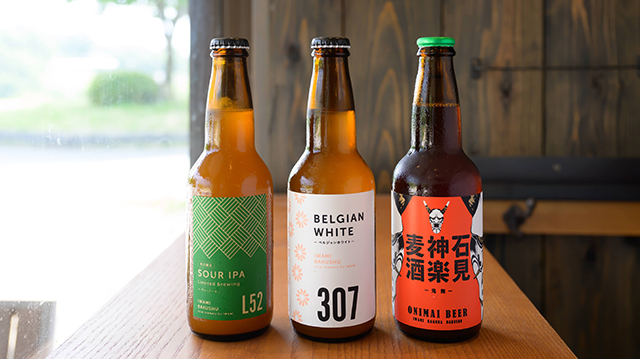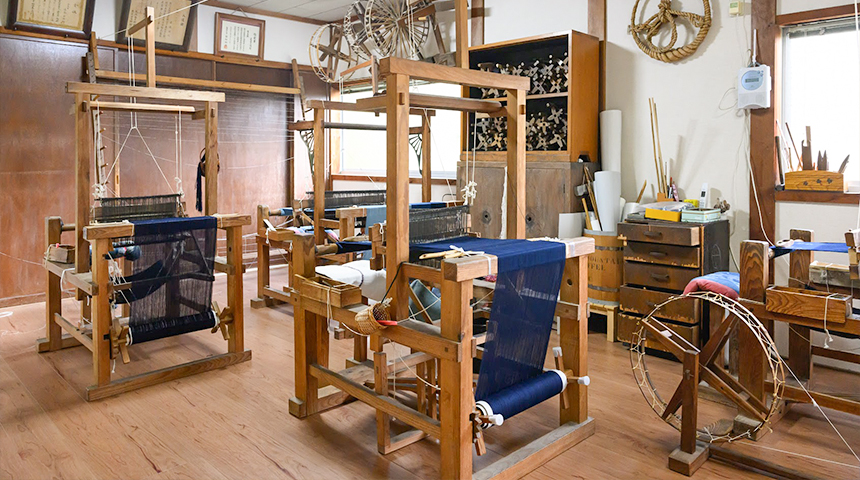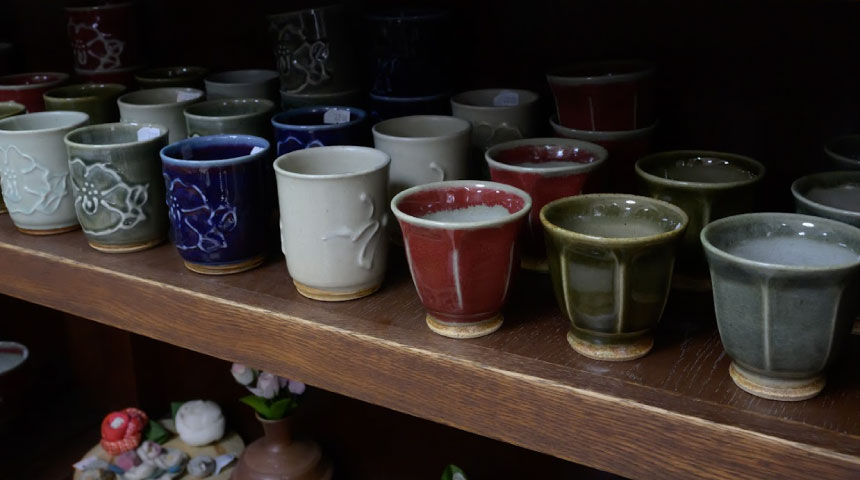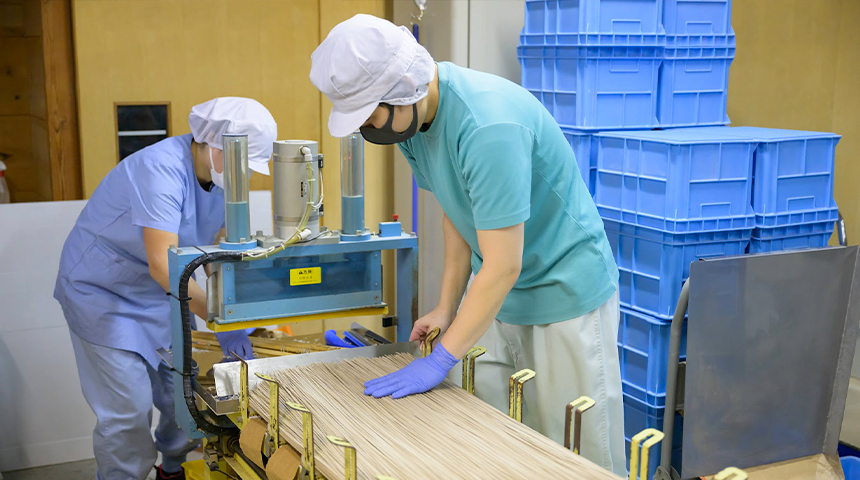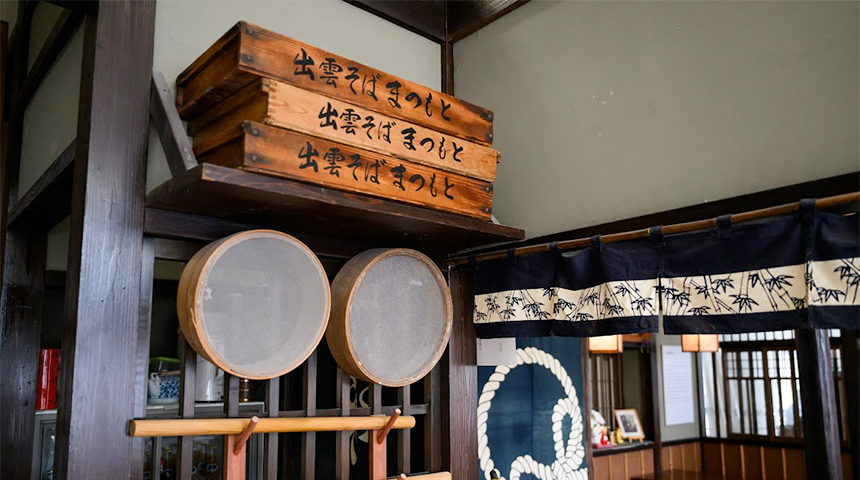Many roughly shaped bowls and cups are stacked in a workshop filled with the scent of wood. They are stored for five or six years at the shortest and often longer.
There is no air-conditioning or heating because the wood cracks when the moisture content changes.
The wood vessels that the craftsman creates reveal the most beautiful grain of the wood, and their smooth curves and lacquer’s luster are stunning.
We interviewed Mr. Hamada, a craftsman of Hikimono-Rokuro (lathe carving art).
History of Hamada Kōbō
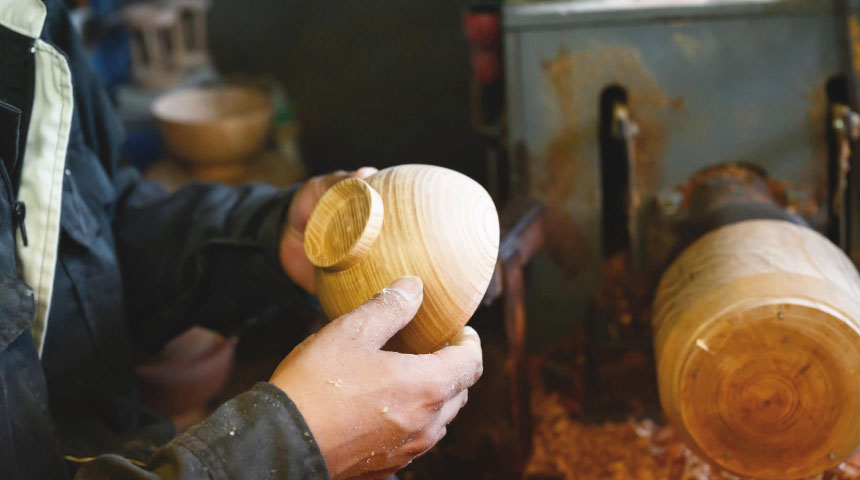
- Tell us what made you start your Hikimono-Rokuro.
-
My grandfather was a woodcrafter and I spent my childhood playing with wood by his side.
I never imagined at the time that I would ever get into this kind of work. However, when I was in high school, I had an opportunity to see the Japan traditional kōgei exhibition at an art museum, where I met Mr. Ryozo Kawakita, a Living National Treasure.
After that, I became interested in the school in Ishikawa Prefecture that was headed by Mr. Kawakita, and I went to that school. That's how I started my profession.
- What does it mean for you to do your activities in Shimane.
-
It’s because this is the place I was born.
When I trained in Ishikawa, I thought about staying there, but I realized that it would be difficult to strike out on my own in Ishikawa where there are so many craftsmen around. Also, I wanted to freely pursue what I want to do where I was born and raised. So, I decided to return to my hometown.
Actually, Shimane and Ishikawa are alike.
Both face the Sea of Japan and have similar humidity, so my work’s production is not affected.
Every work is one-of-a-kind. His thoughts on wood.
- What are your particularities on Hikimono-Rokuro?
-
Our work involves bringing out the wood grain, so we are dedicated to designs and carving methods that do not interfere with the wood grains.
Depending on the wood, there are hard parts and soft parts, so I look at the wood carefully and make decisions before carving. So, I'm happy when the ideal wood grain comes out.
Trees live for hundreds of years, bearing scars that become a part of their growth. These scars may go unnoticed when the trees are standing or turned into boards. It is only during the carving process that these scars reveal themselves. It can be quite shocking after years of carefully preserving the wood.
Besides, every wood is unique, if I make a mistake it is irreversible. So, I concentrate hard to make sure that doesn't happen.
- Tell us what is the ideal wood grain.
-
For example, I like straight wood grains (masame) that evenly lined up. I also like wood grains facing each other, known as mukaimoku, and I try to position these grains right in the middle of my work. As I carve, the grain may shift to either; so, I feel very rewarding when the mukaimoku comes right at the center of the piece.
- How do you feel about being recognized for your skills, having your debut piece selected for the first time, achieving dour consecutive selection at the age of 22? Also, being recognized as a full member of the Japan Kogei Association Japan Crafts Association at such a young age?
-
I think there is still a long way to go.
My initial hope was to exhibit my works early on and with the hope of winning an award at least once in my lifetime. Even now, when I submit my work, I am prepared for the possibility of rejection; I never anticipate I would be selected or win an award.
While I am very happy with how things have gone, but I believe, there is room for improvement and I aim to reach higher.
About Hamada Kōbō
Although he has both manual and automatic lathes, but he prefers to use the manual lathes. He turns the wheel like a foot-pedal sewing machine because he can adjust the speed by feeling the wood with his foot.
In the workshop, there are many pieces that have been left to rest. He shares, "Look at this one—I had roughly cut it in the year 2010. I can't finish it until I decide how to utilize this grain in my work." He values precious wood grains, facing the challenge of creating pieces that bring out the best in them.
Due to space constraints, a new workshop is under construction nearby
This young craftsman, who leads Shimane's traditional crafts, will definitely continue to aim high and create wonderful works.
Products
Overview
- Hamada Kobo
- 2010 Kamiito, Higashi-Izumo-cho, Matsue, Shimane 699-0103
- Phone : 0852-52-3539
- E-Mail : hamadakoubou@outlook.jp

